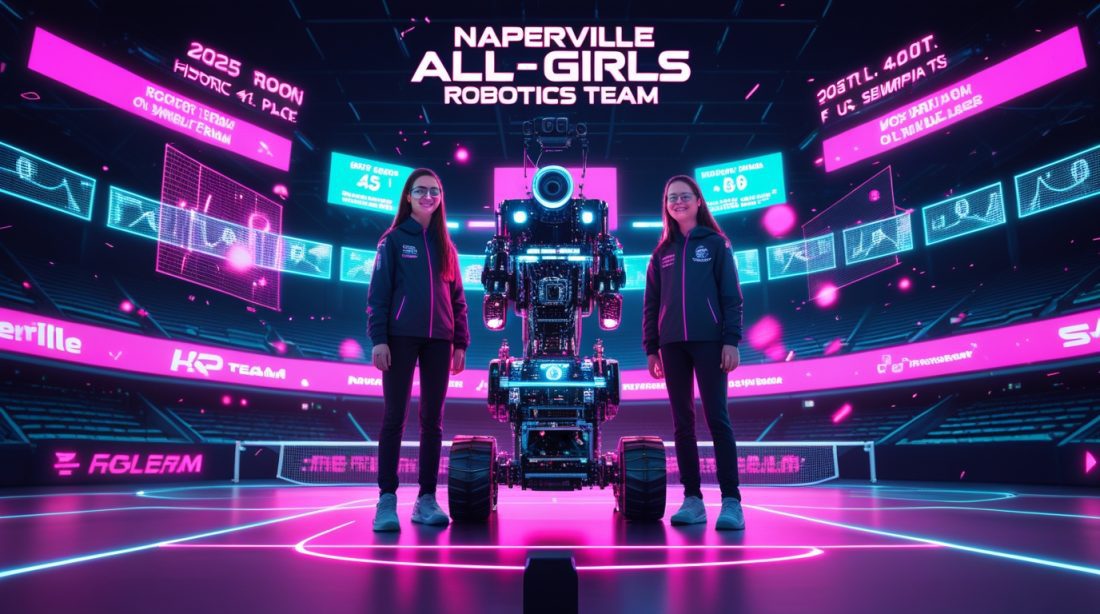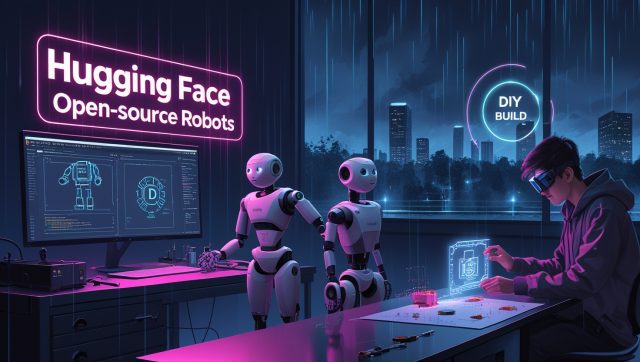In a field often dominated by established tech nations, a story from the 2025 World Robot Olympiad Americas Open Championship captures a critical shift in industrial innovation. The “Robot Penguin,” an all-girls robotics team from Naperville, Illinois, secured a historic fourth-place finish, marking the first time a U.S. team reached the semifinals in this category.
Their achievement transcends a simple trophy; it offers a compelling blueprint for cultivating the next generation of engineering talent. This analysis breaks down the key factors behind their performance, providing a model for building effective, resilient teams capable of competing on the global stage.
➤ Why Preparation Was Their Ultimate Competitive Advantage
The team’s success was not a product of last-minute effort but of a long-term, disciplined investment in skill development. Team member Sweera Sharma, for instance, began building robots at age seven and competed in her first robotics competition at just ten years old. This deep-seated experience provided a foundation that proved crucial when facing unpredictable challenges.
International competitions often introduce new variables at the last minute, leaving little time for teams to adapt. As Sharma’s father and coach noted, handling this pressure “takes months and years to get to a level where at an international stage they can compete against these teams from Asia… and from Europe”. The team’s extensive preparation allowed them to maintain focus and adapt their robot’s code and physical design quickly between matches, a key factor in their victory over teams from robotics powerhouses like China, Taiwan, and Germany.
➤ Why Strategic Adaptation Trumped a Perfect Initial Design
A critical lesson from the industrial world is that a perfect initial design is often less valuable than the capacity for rapid iteration. The Robot Penguin team exemplified this. After placing second at the U.S. Open, they did not simply tweak their robot; they built an entirely new one, incorporating learnings from their initial performance.
Their strategic upgrades were precise and impactful:
- Enhanced Vision: They integrated a camera to improve the robot’s ability to detect differently colored balls on the playing field.
- Refined Mechanics: They added a specialized arm designed to more effectively keep the point-deducting purple balls on their side.
This process of building, testing, failing, and re-engineering is the core of agile development in industrial AI and robotics. The robot they built for the international stage was their most advanced yet, and the girls described it as their “favorite robot they have ever built”.
➤ Why Team Dynamics Are a Non-Negotiable Component of Success
While technical skill is essential, the team’s resilience was rooted in their strong collaborative dynamic. The three girls—Sweera Sharma, Ananyaa Karthik, and Hamsini Chennupati—emphasized that they were in the competition together. This shared experience transformed pre-competition nerves from a liability into a unifying force.
Ananyaa Karthik highlighted this, stating, “Even though I’m feeling nervous, I think we all are feeling it together. And it just helps knowing that I have someone who’s experienced what I felt. And because of that, we can understand each other and comfort each other”. This supportive environment enabled them to perform under pressure and was a decisive element in their ability to defeat teams with more technically advanced-looking robots.
Frequently Asked Questions
What competition did the Naperville all-girls robotics team win?
How can students join a robotics team like Robot Penguin?
While the specific process for Robot Penguin isn’t detailed, similar high school teams like Huskie Robotics in Naperville actively recruit through school events and online interest forms. They encourage incoming freshmen and other students with an interest in STEM to sign up for notifications about preseason activities.
What was the game the robotics team competed in?
The competition was in the “robosports” category, which featured a game of robot double tennis. Each team had two autonomous robots on a field tasked with pushing orange balls (worth +1 point) to the opponent’s side while keeping purple balls (worth -2 points) on their own side. The team with the lowest score at the end won.
What is the impact of all-girls teams in STEM competitions?
The Robot Penguin team’s success demonstrates that all-girls teams can not only participate but excel and set new benchmarks in highly competitive technical fields. Their presence helps reshape the landscape of robotics, inspiring more young women to pursue technology and engineering by providing visible role models and a supportive team environment.
Fast Facts
An all-girls robotics team from Naperville, “Robot Penguin,” placed 4th at a major international competition by mastering five key factors: long-term preparation, strategic robot iteration, resilient team dynamics, focused problem-solving, and a shared passion for technology. Their success provides a replicable model for building future engineering talent.
Further Reading & Related Insights
- AI Adoption in Nigerian Manufacturing → Explores how infrastructure and skills gaps affect AI adoption—parallels the challenges young robotics teams face in scaling innovation.
- Managing Orphaned AI Models: Industrial Risk → Highlights sustainability issues in AI projects, echoing the importance of long-term preparation and iteration in robotics competitions.
- AI Bubble Narrative: Industrial AI ROI → Examines whether AI investments deliver real returns, relevant to discussions of how robotics competitions build lasting value.
- How MIT Is Scaling Robot Training Data with Generative AI → Demonstrates advanced approaches to robot training, aligning with the Robot Penguin team’s iterative design and adaptation strategies.
- Three Lives of a Robot: Industrial AI → Explores the lifecycle of robotics systems, resonating with the team’s journey of building, testing, and re-engineering their robots.
Subscribe to Our Newsletter
Get more insights on the technologies and strategies shaping modern industry.
Stay ahead of the curve with our analysis on real-world AI and robotics applications, from the lab to the competitive arena.



